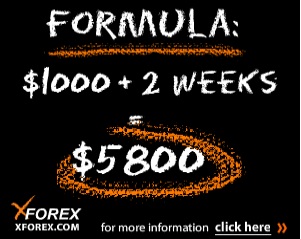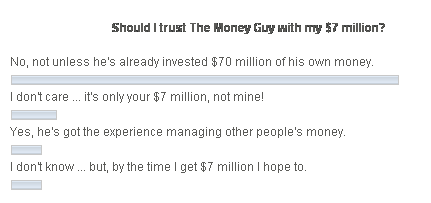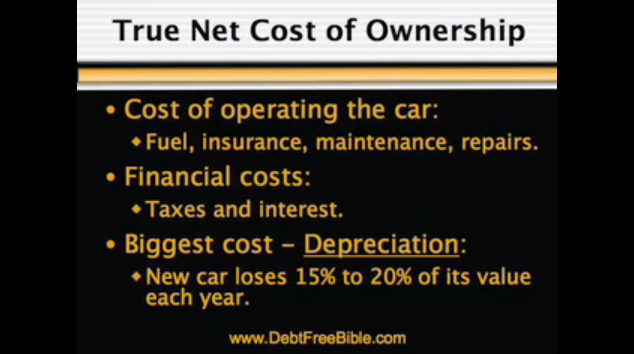 Like you, I receive a lot of spam … fortunately Google’s g-mail picks most of it up and automatically dumps it into the ‘trash’ folder for me.
Like you, I receive a lot of spam … fortunately Google’s g-mail picks most of it up and automatically dumps it into the ‘trash’ folder for me.
Most of the spam that I receive is of the “congratulations you have won the Dutch lottery” or the “Mr Nagambi, a senior official in the Uganda government needs your help” varieties. It seems that most spammers are happy with my current vitality and physical dimensions 😉
The problem is, this kind of spam receives no attention, because it takes more than it gives: “give me your credit card number and I will give you some purple tablets” [AJC: either that, or steal your money … spam ‘n scam!].
Good marketing, whilst often bordering on spam (be very careful not to cross the line, though!) gives in order to get: this could be free products (i.e. give me your e-mail address and I will send you my free report … followed by 7 carefully worded and timed sales letters), or simply some free information, like this unsolicited e-mail that I recently received:
Hi Adrian,
Only 43% of consumers will cut back on holiday spending this year, compared to 55% in 2008, according to a Consumer Federation of America survey. While increased consumer optimism spells good news for retailers, for Americans planning to “stretch” the budget, the New Year could bring falling credit scores, and with it, serious consequences.
Here are some fail-safe tips from FICO Credit Guru Shon Dellinger to help enthusiastic shoppers stay financially sound:
1. Be Smart with Credit. Using a credit card is ok – experts agree having 3-5 credit cards helps your credit, if used responsibly. But carrying a balance on your credit card leaves you (1) stuck paying interest that could cost you, in some cases, double or triple the cost of those gifts in the long run and (2) with a much lower credit score, which could jack up interest rates on your credit cards and jeopardize your chance of getting lines of credit elsewhere (buying a house, a car, etc.). Services like FICO Score Watch combat this by providing emails or texts alerting you to any changes in your FICO score (either positive or negative), and notifying you when you’ve qualified for a better interest rate. A credit score increase of 30 points will save the average consumer $105 per year.
For more information on FICO Score Watch, go to: www.myfico.com/Products/ScoreWatch/Description.aspx.
2. Resist “Short Savings.” The salesperson at your favorite department store offers you an instant 20% savings just for opening up a credit card in their name. While that $20 seems tempting at the time, it can quickly put you in debt if you’re not careful. The temptation of the deal is also one reason why the average consumer has a total of 13 credit cards. Opening new lines of credit can also hurt your credit score, so make sure the card meets your overall needs and not just your desire for quick savings.
3. Don’t Wait Till April! Many holiday shoppers use their Tax refund to pay off credit card balances left over from the holidays, which can be incredibly expensive, not to mention detrimental to your credit standing. A credit card balance of $500 dollars from January until April will cost you $237 dollars based on today’s average credit card interest rate.
Please let me know if you are interested in speaking with FICO credit guru Shon Dellinger about these credit saving holiday tips and what else consumers can do this year to assure that their 2011 New Year’s resolution isn’t fixing the damage they did to their credit in 2010. Also, the myFICO Forums can offer your readers helpful tips.
Cheers,
Ashley Kleinstein
Access PR for FICO
Now, I didn’t mind receiving this e-mail because it seems to offer useful information and isn’t directly asking for a sale, although I only gave it a cursory scan because my FICO score is just fine [AJC: and, thank you very much for asking 🙂 ].
Also, I know why this was sent to me: since it was sent under a PR agency’s moniker and I am a blogger, I surmise that they are really hoping that I (or the other personal finance ‘media’ people out there) will publish their content as an article [AJC: as I have ‘cleverly’ done here …. for all you new and aspiring bloggers out there, see how I just lifted some random content and made a post out of it? 😛 ]
What do you think? Is this an automatic delete? If you are not vehemently opposed to it, how would you improve the e-mail?
[Hint: I would present it as a free sample of an online newsletter and ‘click here if you would like to continue receiving it monthly …. usual price $79 for a year’s subscription, but free to you and no credit card required!’ to make it seem valuable]



 Trent at A Simple Dollar poses an equally simple question:
Trent at A Simple Dollar poses an equally simple question:  A week or two ago, a reader – who shall remain nameless as they are currently in negotiations – asked for some advice on selling their business:
A week or two ago, a reader – who shall remain nameless as they are currently in negotiations – asked for some advice on selling their business:
 What do cars and radioactive material have in common?
What do cars and radioactive material have in common?

